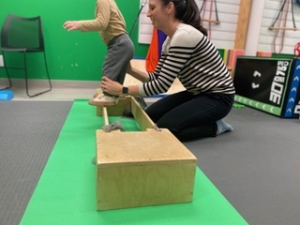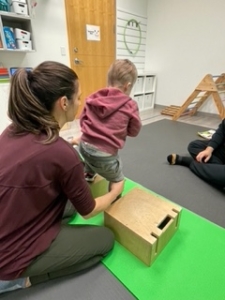Dynamic Movement Intervention (DMI)
What is DMI?
Dynamic Movement Intervention (DMI) is a treatment technique used by physiotherapists and occupational therapists to treat children with gross motor delays. The therapist uses different handling techniques to elicit automatic postural responses that help your child progress their motor skills and developmental milestones. This technique incorporates research on neuro-rehabilitation and works to simulate neuroplasticity in your child, to help with the development of their motor milestones.
During a therapy session with DMI, an assessment will take place to determine appropriate exercises that challenge your child’s physical and neurological system. Exercises focus on achieving proper alignment and work towards creating core stability for functional movements like sitting, crawling and walking. Exercises against gravity are introduced with progressions to increase the challenge and provoke desired movement patterns. Improved balance is a common goal in DMI.

Who is DMI useful for?
DMI is appropriate for children with delayed motor skills, from rolling to walking, due to a variety of diagnoses including;
- Down Syndrome
- Cerebral Palsy
- Global Developmental Delay
- Hypotonia
- Genetic Disorders/Chromosomal Abnormalities
- Spinal cord lesions, or acquired brain injuries.
- It is also beneficial for children with risk factors for delay such as those born prematurely
If you are interested in DMI therapy and wondering if it is appropriate for your child, you can gain more information below or reach out to book a session with our DMI trained therapist, Kate Heays.

Where can I learn more?
Learn more about Kate Heays.
How can I book a session?
Click HERE to book a session with our therapist Kate Heays who has her Level C training in DMI!


Written By: Kate Heays
